I always knew the Scottish Highlands would be beautiful but I didn’t expect them to be as stunningly spectacular as they are.
The mountains are not that high – you can count on the fingers of one hand those over 1,000 metres. But how massive they look!
They are not like the Swiss Alps, because the Scottish mountains been glaciated and have rounded tops, like most of our own. But they are all bare-faced escarpments; glistening sheets of pink sandstone and boulders, and blankets of heather and bracken stretching as far as the eye can see.
There is an edgy wildness about these mountains. They look wild and dangerous. I saw them in autumn, on a skite along Scotland’s North Coast 500, an 830km long Scottish rival to our own Wild Atlantic Way. It takes in Scotland’s north-west coast before wheeling across the top of the country to John O’Groats, before turning south to Inverness.
For us in Ireland, this region is almost as accessible as the Wild Atlantic Way, just a short ferry ride from Belfast across the North Channel to Cairnryan, and up into the Highlands along Scotland’s mostly excellent road network.
Along with with fellow motorbiker Geoff Hill (he on a BMW R850, me on a Honda Shadow VT600), I headed north-east, up to Inverness, passing through the Cairngorms National Park.
Our recuperative first night was spent in the Ness Walk Hotel, an elegantly proportioned, five-star, butter-coloured sandstone Edwardian villa on the bank of the river Ness. We were pampered to within an inch of our lives; guests are plied with champagne on arrival and for dinner, it had to be venison.
Outside in dappled evening light, fly fishermen tried their luck on the Ness, flowing wide and shallow into the Moray Firth, leaving behind the loch from which it takes its name, though ne’er a sign of Nessie does one see.
Next morning, we struck out west along the route known simply as the NC500. It’s up to you whether you do the circuit clockwise or anti-clockwise, and we chose the former.
Soon we were on the A832 heading for the seaside village of Gairloch. We got our first glimpse of the epic scale and sheer undiluted beauty of the western Highlands at Glen Docherty, a viewpoint looking down a perfect U-shaped valley sliding into Loch Maree and, beyond it, the sea.
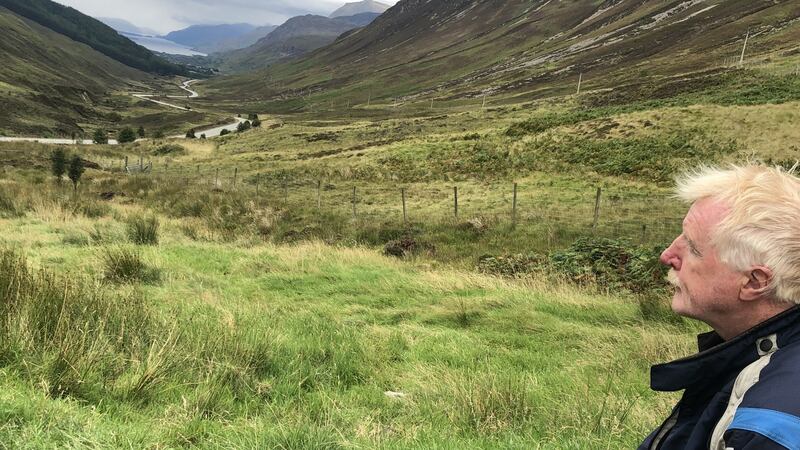
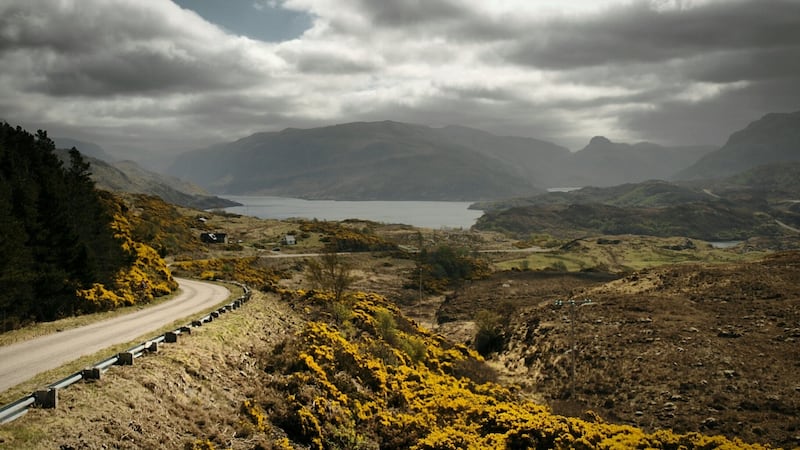
At Gairloch itself – full of bikers and camper vans (of which there are almost as many as cars) – Andrew Soutar introduced himself when we stopped outside the local visitor centre.
A former biker and military policeman stationed in Germany in the 1950s, he’s a textbook example of how to bounce back from life’s heartaches. His wife died in 2013 but a little later and while on holiday in Cuba, at dinner Andrew spied Lucille from Ottawa sitting alone. The rest is happily ever after, as they say. . . which isn’t bad going, considering Andrew is 87 (but doesn’t look a day over 70).
We spent the night at the Gairloch Hotel, a somewhat dour-looking place but popular with bikers, of whom there were about two dozen. Dinner was Cullen Skink – the name alone demanded it be ordered; a sort of Scottish chowder made of smoked haddock, potatoes and onion – and haggis.
Afterwards, we slumped into winged armchairs and sipped malt, while listening to a one-man band. He played, variously, the accordion, flute, sax, clarinet, tin whistle and guitar, and had an eclectic playlist that included The Banks of Loch Lomond, various numbers by Johnny Cash and the Drifters, before veering into Gershwin’s Lady Be Good.
“Do sing along,” he encouraged, before adding, “or don’t if you don’t want to.”
Next morning, the road out of Gairloch rose to cross a peninsula before falling into Poolewe. Once more, the view down to Loch Ewe and across it to Ben Mor Coigach (there are echoes of Scots Gaelic alright) was epic. The way was lined with larch, silver birch and rowan trees, with vibrant bright red and orange berries. Gradually, bracken gave way to heather and upland moor with scatterings of self-seeded wild pine trees.
Under a gun-metal grey sky, the peaks of An Teallach, Beinn Dearg and, beyond further north, Ben More Assynt and Quinag, had a doom-laden, ghostly Lord of the Rings look about them. On many occasions, the only thing to do was stop, silence the bikes and just drink in the view.
A pause in Ullapool was cut short as we fled a bore from a Morgan sports car club that had just invaded the small port village. On the way, skirting along the flank of the Cromalt Hills near Loch Assynt (the 16th century ruins of Ardvreck Castle are a must-stop) we met John, Richie and Graham from Crumlin, also biking the NC500.
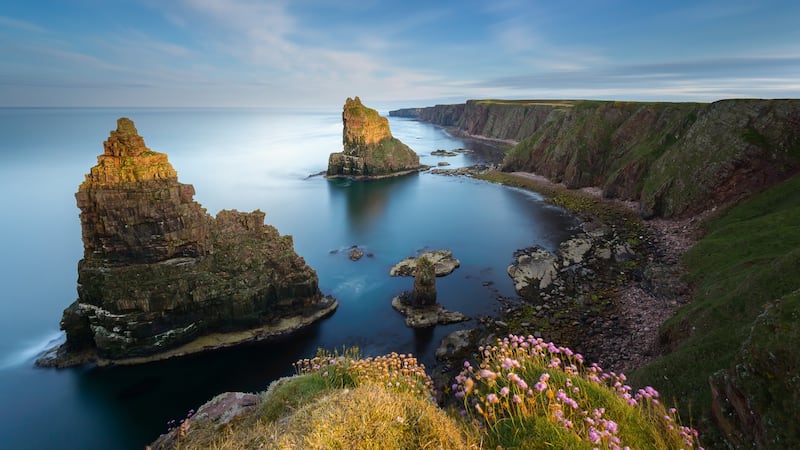
The road meandered north along the coast, crossing multiple peninsulas before dropping down into Durness and Balnakeil Craft Village. The cluster of single storey, concrete portacabin-like buildings were put up by the Royal Air Force in the 1950s as a Cold War listening station, but never used.
An abandoned mess, it was taken over by the local council but the only people interested in making a go of the place were artists and alternative life seekers; and they’ve done just that. The place is now abuzz with painters, glass makers, jewellers, potters, woodworkers, and someone who’ll tell you all about torridonian sandstone (1,200 million years old) and pegmatite (1,700 million years old) if you’re interested. And I was.
From here, a good deal of the route due east to John O’Groats is single track, with passing places for oncoming traffic every 100 metres or so. It works fine but near Bettyhill, the surface and edges have crumbled so badly that it is positively dangerous, especially for cyclists.
John O’Groats village was a photo op and a realisation just how far north we are – almost level with Stavanger in Norway – and a jumping off point for the abandoned island of Stroma and the Orkneys.
But instead we headed south to Wick, from where you can see North Sea oil rigs and wind farms side by side – the past and the future – and to bed in Mackays Hotel. The building is squeezed into a wedge-shaped site on Union Street, facing former John O'Groats Journal print works, and Ebenezer Place – at just 2.06 metres, it's the shortest street in the world, according to the Guinness Book of Records.
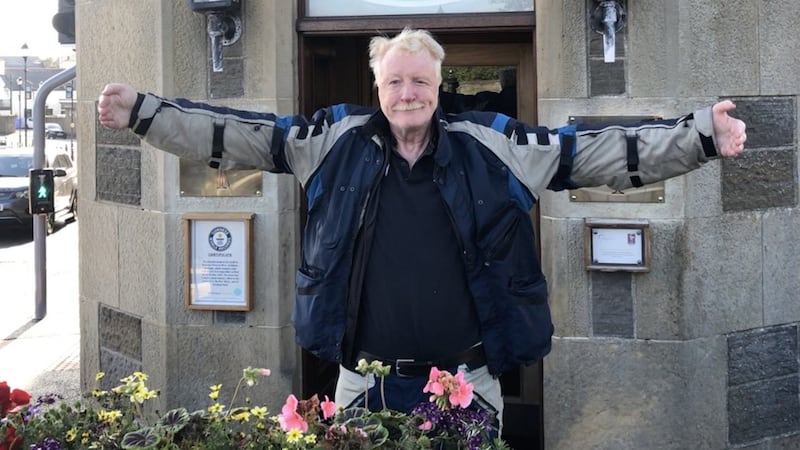
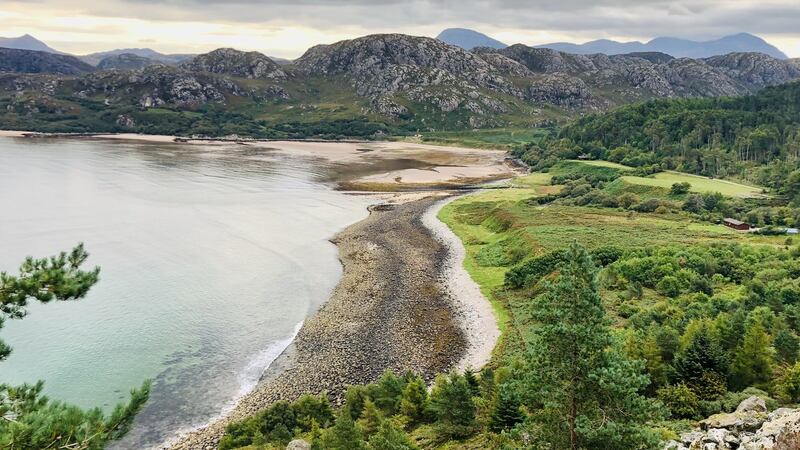
A family-run hotel, they served us a hearty lamp shank dinner and we drank beer, resisting the temptation of a 1948 bottle of Glen Grant single malt for £3,250, for sale in the off-licence next door.
The A9 then took us south to Inverness. Gone were the fierce mountains of the west, but the coast was still full of surprises, including Whaligoe Haven, a tiny natural harbour, 75 metres below sheer cliffs and accessible from land only by descending 365 steps. It was used in the 18th century for landing herring, whitefish and shellfish.
A little further on was Dunbeath, a pretty-as-a-picture harbour still in use and lined with cottages and a wall of sweetpea flowers. It’s also home to Tasty Toes, a tiny fish shack run by Lee, who served us dressed crab to munch on while enjoying the view sitting on the old quay.
Our final night was in the Dornoch, at the Royal Golf Hotel. If your thing is low key style and elegance amid picture-perfect golf links, then here you have achieved nirvana.
Peter and Geoff sailed Belfast to Cairnryan with Stena Line, stenaline.co.uk, and were guests of North Coast 500, whose website, northcoast500.com and app have everything you need to know about the road and the many enjoyable distractions along the way.











